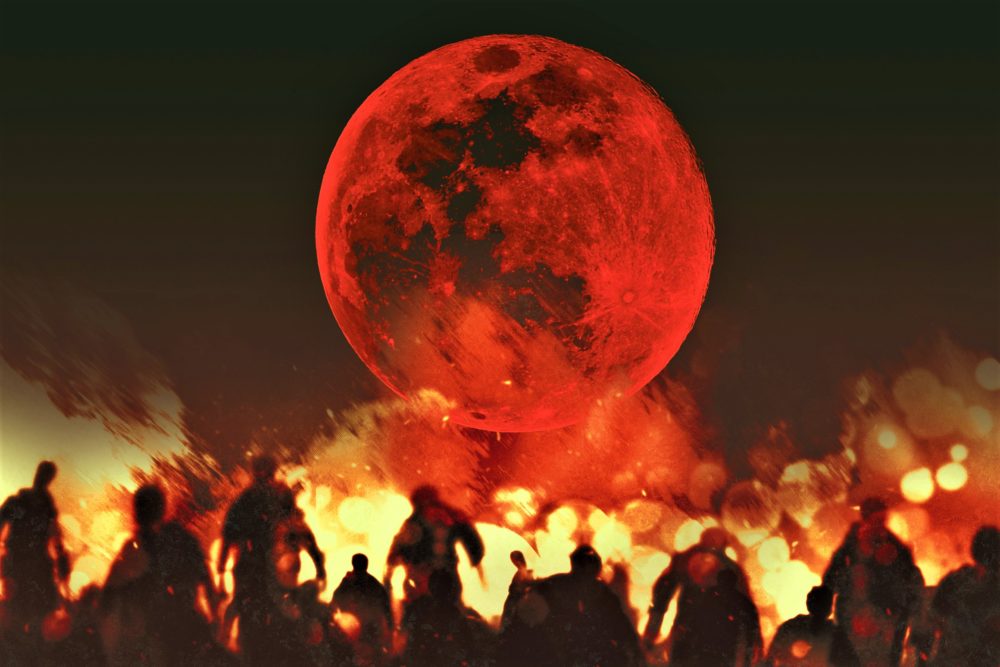

A total penumbral eclipse can precede or follow a total umbral eclipse.Īll lunar eclipses don't look the same! Andre Danjon proposed the Danjon scale to describe the appearance of a lunar eclipse: The eclipse lasts longest when the Moon is at its furthest point or apogee. How long the eclipse lasts depends on how close the Moon is to the Earth. This type of lunar eclipse occurs about 35% of the time. Total Lunar Eclipse - Generally when people talk about a total lunar eclipse, they mean the type of eclipse where the Moon travels fully into the Earth's umbra. The part of the Moon falling within the umbral shadow dims, but the rest of the Moon remains bright. Partial Lunar Eclipse - When part of the moon enter the umbra, a partial lunar eclipse occurs. Partial penumbral eclipses occur more often, but they tend not to be very well publicized because they are difficult to see. In this type of eclipse, the dimming of the Moon is directly proportional to the area of sunlight blocked by the Earth. The Moon may appear gray or golden and may almost completely disappear at totality.
Blood moon lunar eclipse full#
In a total penumbral eclipse, the full moon is entirely shadowed by the Earth's penumbra. During this type of lunar eclipse, the portion of the Moon that is eclipsed appears darker than the rest of the Moon. Penumbral Eclipse - A penumbral eclipse occurs when the Moon passes through the Earth's penumbral shadow. In a lunar eclipse, the color of the Moon (refracted light) depends on the alignment between the Sun, Earth, and Moon. The penumbra gets light because the Sun has such a large angular size the sunlight isn't totally blocked. The penumbra is dim, but not completely dark. The umbra is the portion of the shadow that has no solar radiation and is dark. The Earth's shadow consists of two parts. The type of lunar eclipse depends on how much of the Earth's shadow covers the Moon. The shadow of the Earth falls across the face of the Moon. Ron Miller/Stocktrek Images / Getty ImagesĪ lunar eclipse occurs when the Earth is directly between the Sun and the Moon. Never miss a story: Subscribe to the Tallahassee Democrat using the link at the top of the page.A diagram illustrating how eclipses are created. Ken Kopczynski is president of the Tallahassee Astronomical Society, a local group of amateur astronomers. Totality begins at 11:29 p.m and ends at 12:54 am.ġ6th: Full Moon above bright star Antares in Scorpius the Scorpion.Ģ9th: Mars and Jupiter very close together. Moon above the Beehive star cluster in Cancer the Crab.ĩth: First quarter Moon near bright star Regulus in Leo the Lion.ġ3th: Moon near bright star Spica in Virgo the Maiden.ġ5th – 16th: Total lunar eclipse. sharp.ħth: 1st quarter Moon observing at Cascades Park 8:30 p.m.
Blood moon lunar eclipse free#
until noon.ħth: Tallahassee Astronomical Society’s free planetarium show, “May Skies over Tallahassee,” at the Downtown Digital Dome Theatre and Planetarium at the Challenger Learning Center (not recommended for children under 5). TAS will have solar scopes set up outside the Challenger Learning Center from 9 a.m.

Moon and bright stars Pollux and Castor in Gemini the Twins, form a line in evening sky.ħth: Astronomy Day. Binoculars or a telescope will help.Ħth: 1st quarter Moon observing at Cascades Park 8:30 pm – 10 pm. 2nd: Thin crescent Moon, Mercury, and Pleaides star cluster form a line in the west just after sunset.


 0 kommentar(er)
0 kommentar(er)
